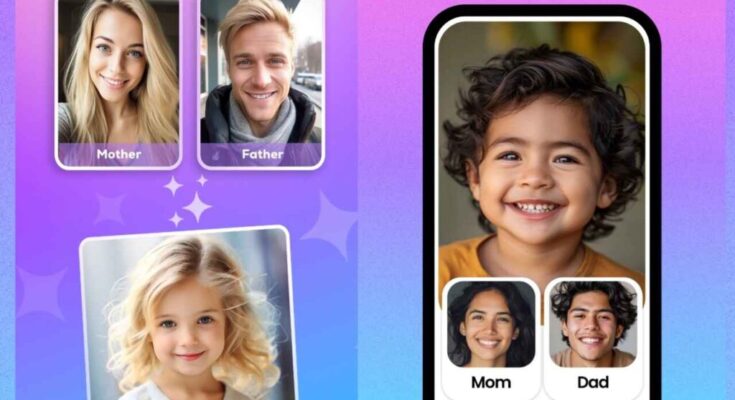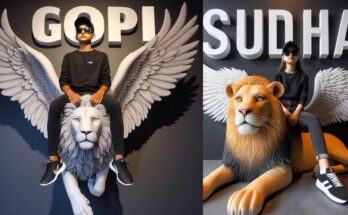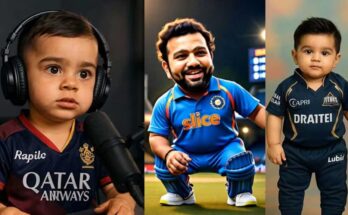Have you ever wondered what your future child might look like? It’s a thought that crosses the minds of many couples, newlyweds, and even curious friends. Today, you don’t need to wait for nature to reveal the answer. Thanks to artificial intelligence, baby face generator apps can now offer a fun and imaginative look into the future. While not scientifically precise, these apps continue to grow in popularity as an engaging tool for entertainment and bonding.
The Rise of Baby Prediction Apps
Baby prediction apps have carved a unique space in the digital landscape. They combine advanced facial recognition with machine learning to produce images of what a child might look like based on two parent photos. These apps are widely used not just by couples but also by individuals who are simply curious or looking to have fun with friends and family.
The concept might seem lighthearted, but the technology behind it is complex. The generated images are not accurate in a scientific or genetic sense, but they often surprise users with results that feel realistic enough to spark excitement and conversation.
How Baby Face Generators Work
At the heart of these apps is facial recognition technology. Most baby face generators work through a simple process:
- The user uploads two photos, usually one from each parent or partner.
- The app scans and analyzes key facial features such as the shape of the eyes, nose, jawline, lips, and facial symmetry.
- Using artificial intelligence and image-blending algorithms, the app creates a new image that combines features from both parents into a single baby face.
The process is typically quick and requires minimal user input beyond photo selection. Many apps also offer different styles or age stages, such as showing a baby, toddler, or even older child.
The Role of Artificial Intelligence
The primary driver behind baby predictor apps is artificial intelligence. These apps rely on deep learning models that are trained using thousands of facial datasets. This allows them to understand patterns and make educated visual guesses about how features might combine in a child.
AI helps with more than just blending facial features. It considers factors like skin tone, eye color, and face shape to make the prediction feel more realistic. Over time, as more users upload photos and generate baby images, the algorithm can become more refined and produce better visual outcomes.
Although these results can feel surprisingly close to reality, it’s important to remember they are still visual approximations, not scientifically validated predictions.
Why Are These Apps So Popular?
There are several reasons behind the popularity of baby face generator apps:
- Entertainment Value: Most users try these apps just for fun. The novelty of seeing what your child might look like is intriguing and often leads to laughs and light-hearted reactions.
- Social Media Appeal: Many people love sharing their generated baby photos with friends and family online. Platforms like Instagram, TikTok, and Facebook are full of posts and videos reacting to these AI-generated baby faces.
- Bonding Between Couples: For couples, especially those planning a family, these apps offer a playful way to imagine the future and connect over the idea of having a child.
- Curiosity: Even individuals who are not in a relationship use these tools to explore possibilities or just pass the time in a creative way.
In a world where digital content is often personal and shareable, these apps provide a unique blend of both.
The Difference Between Fun and Accuracy
One of the key points users need to understand is the difference between entertainment and scientific accuracy. Baby face generator apps are not tools for predicting genetic outcomes. They do not analyze DNA or use genetic data to predict features. Instead, they rely solely on facial patterns visible in the photos provided.
Actual genetics is far more complex. A baby’s physical features are determined by multiple genes inherited from both parents. For example, eye color alone can be influenced by more than ten different genes. Therefore, it is impossible for an app to accurately predict how a child will look based on a photo alone.
Despite this limitation, users enjoy these apps for what they are—a fun and imaginative exercise, not a medical or scientific tool.
Apps Offering More Than Just a Face
Some baby predictor apps go beyond facial generation. They include additional predictions based on parental inputs such as:
- Possible eye color
- Skin tone
- Hair texture
- Height or body type
- Even personality traits
While these features are presented as fun add-ons, they should also be taken lightly. The intention is not to provide accurate predictions but to offer users a more interactive and enjoyable experience.
These extra features often help extend the app’s engagement, especially for users who are sharing their results online or using the app with their partner.
The Role of Social Media in Popularity
Social media has significantly boosted the success of baby face prediction apps. People love posting their generated baby faces and reacting to the results. These posts often go viral because they are visually engaging and emotionally relatable.
Whether it’s a couple laughing at how funny their predicted baby looks or someone genuinely surprised by how realistic the image seems, the content is perfect for sharing and gaining attention.
Many apps have built-in sharing features that allow users to post directly to social platforms, further fueling their popularity.
When the Real Baby Arrives
For couples who have used these apps while expecting, it becomes a fun moment of comparison once their baby is born. Some parents return to the app results to see how closely the AI-generated photo matches their actual child. While most recognize the differences, occasional similarities make for entertaining stories and memories.
This real-world reflection helps reinforce the light-hearted purpose of these tools—they are not predictors of reality, but rather companions in the journey of imagination.
Ethical Considerations and Public Opinion
As with many AI-based tools, baby face generator apps also raise ethical concerns. Some people question whether these apps promote unrealistic beauty standards or encourage the idea of designing a “perfect” child.
Others argue that the technology, while entertaining, may unintentionally reinforce certain biases if the datasets used in training the AI are not diverse enough.
However, most users understand that these apps are intended purely for fun. As long as users are aware of the limitations and use them responsibly, the risks remain minimal.
The Future of AI and Baby Prediction
Looking ahead, the combination of artificial intelligence and genetic science could lead to more advanced tools. In the future, we may see apps that can analyze actual genetic data to make more precise visual predictions, though such developments would raise even more serious ethical and privacy questions.
For now, baby face generator apps represent the intersection of technology, curiosity, and entertainment. They offer a safe and enjoyable way for users to imagine the future without any long-term implications.
Final Thoughts
Baby predictor and baby face generator apps continue to capture the interest of users around the world. Their blend of AI, imagination, and playful engagement makes them popular among couples, individuals, and families.
They are easy to use, visually engaging, and perfect for sharing. While not scientifically accurate, they offer a glimpse into what the future could look like—if only through the lens of creativity and technology.
Whether you’re planning a family, curious about possibilities, or simply looking for something fun to try with friends, these apps provide a digital window into the imagination.



